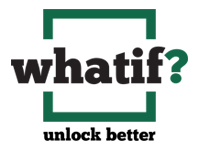
What if?…
What if we looked at the trinity of employees, suppliers, and customers as a source of innovation for value creation?
here’s no question that COVID-19 continues to be a significant disruption in our personal, professional, and family lives. At the outset, the crisis shone a spotlight on every business, institution, and agency. It exposed the challenges and friction points associated with shifting to serving customers, stakeholders, and employees in a virtual environment. While many responded quickly and used the pandemic as a lever to become more digitally-enabled, the crisis showed that overall we were not prepared to become a digital society. Ask parents about their experience with virtual courses and classrooms, people living in rural areas connecting with spotty bandwidth, or employees working in a desktop environment confronted with having to work from home and you’ll hear stories of frustration and helplessness.
There’s also no question that we will see some remarkable change and innovation as we learn to thrive in a new and different operating environment. The hard problems of today will lead to new solutions for tomorrow. Innovation is born from disruption and we ultimately gain from it. For those of us that remember the oil embargo of the 70s, that crisis gave birth to lighter, more fuel-efficient cars and a focus on quality. And, while early efforts fell short (remember the K car?) the industry continued to innovate and evolve to where we now have cars that contain more tech than the lunar landing module. The Hollywood writers’ strike in the late 80s gave birth to reality TV, so we can blame them for what we now consume on TV. The collapse of the cold war accelerated R&D in the sporting industry, with golfers for one, caught up in a new arms race buying the latest and greatest space-age clubs that promise to deliver longer distance and more accuracy. I am personally caught up in that one.
The innovation we see over the next few years will be born from technology, and ultimately change the customer, student, citizen, and employee experience. Existing friction and choke points will be eliminated and time to value will accelerate. Those who fail to adopt will fall away while those who do will take the lead. As with past innovations, society will benefit from new products and services easier to consume.
The pandemic presents us a unique opportunity to change the way we engage and connect with each other. To force a rethink on how we innovate to create value. What if we looked at customers, employees, and suppliers as crucial elements of our stakeholder value creation formula? In many cases, organizations invested in improving the consumer experience without making commensurate investment in improving the employee experience, who are critical in delivering the value proposition. They also looked at suppliers as a source of cost, employing aggressive procurement practices to drive down prices at the expense of more productive relationships. How likely is an employee or supplier to bring forward new ways of improving the end user experience if they are treated as a cost to manage vs. a partner to engage? How much customer and employee loyalty could be created if they believe they are key to creating better solutions?
What if we decided to think more holistically and act more interdependently to show up differently in the new operating environment? What if we looked at the trinity of employees, suppliers, and customers as a source of innovation for value creation? How might we change the way stakeholders view our businesses, institutions, and agencies if we did? What if they could see us operating from a higher sense of purpose designed to enrich everyone’s experience? Could we build resilient businesses that thrive vs. just survive in the long-term? Could we deliver world-class healthcare and education? Create a happier, more productive citizenry?
As we face a potential second wave of COVID-19 this fall, perhaps it’s time we challenge ourselves with some big what if questions and explore possibilities we might not have entertained before the crisis.
Let me know your thoughts.


Leave a Reply